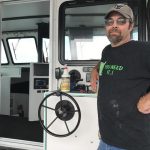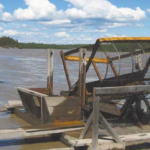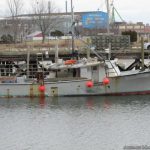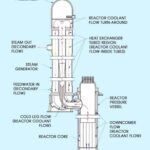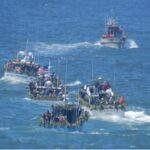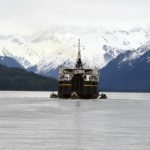Tag Archives: Pacific Coast
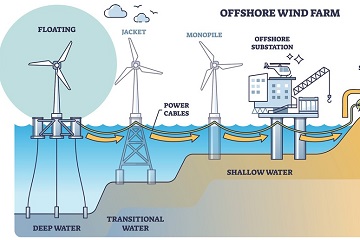
Humboldt Bay – Port of Entry
Big changes are afoot on the Samoa Peninsula. The Humboldt Bay Harbor, Recreation and Conservation District is planning to construct a large manufacturing center to craft and assemble giant wind turbines suitable for the deep offshore waters of the Pacific Coast. Officially known as the Humboldt Bay Offshore Wind Heavy Lift Multipurpose Marine Terminal Project, the port development is a crucial step to bring plans to build a first-of-its kind wind farm off the Pacific Coast to fruition. It would also position Humboldt’s as the only port on the West Coast built to manufacture and repair the turbines — a potential economic boon for the area as the industry enters a period of unprecedented growth. In an effort to address the climate crisis, the Biden administration issued an executive order about a year ago requiring 30 gigawatts of energy to be produced by offshore winds by 2030. >click to read< 10:04

Did Ottawa truly understand the impacts of closing most salmon fisheries on the Pacific coast?
Twenty-one years ago, I married into a fishing family. Soon after, we started Skipper Otto to help connect customers with locally sourced and sustainably harvested seafood. The spring is always the busiest time. There are boats to prepare for the season, fishing nets to repair, staff to hire and operations to launch. At the end of June 2021, when boats had already left the docks and were on the fishing grounds, the federal government announced the closure of 60 per cent of salmon fisheries on the Pacific coast. Specifically, these closures affected commercial salmon fisheries and First Nations communal commercial fisheries. Bernadette Jordan, then minister of fisheries and oceans, announced the closures to reduce pressure on salmon stocks. >click to read< 08:42

International Pacific Halibut commission raises most Alaska harvest limits for 2022
An uptick in halibut stocks along much of the Pacific coast means increases in total catch limits in every region of Alaska this year. The International Pacific Halibut Commission decided in its annual meeting last week to increase catch limits in every management region except for 2A, which covers the California, Oregon, and Washington coast, with an overall coastwide increase of nearly 6%. The increase comes after IPHC researchers informed the commission that halibut stocks were showing signs of rebounding from lows in the last five years, in part due to a large age class from 2012 becoming mature. The long-term trends of decline seemed to end in 2013, when the stocks began to climb again. >click to read< 14:37
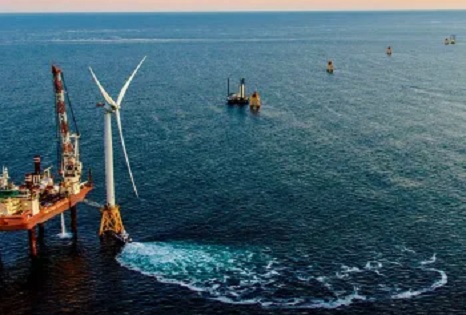
Joe Biden’s Offshore Wind Farm Mirage – a scam. The costs and impacts are enormous.
The only existing U.S. offshore wind operation features five 6-MW turbines off Rhode Island. Their combined capacity (what they could generate if they worked full-bore, round the clock 24/7) is 30 MW. Mr. Biden is planning 1,000 times more offshore electricity, perhaps split three ways: 10,000 MW for each coast. While that might sound impressive, it isn’t. It means total wind capacity for the entire Atlantic coast, under Biden’s plan, would only meet three-fourths of the peak summertime electricity needed to power New York City. Again, this assumes the blades are fully spinning 24/7.,, How many millions of tons of steel, copper, lithium, cobalt, rare earth elements, concrete, petroleum-based composites (for turbine blades), and other raw materials would be required to manufacture and install the turbines and undersea electrical cables, especially where deep-water turbines are involved? How many billions of tons of ore would have to be mined, crushed,,, not very green, these things! >click to read< 14:43
Marine ecosystems still at risk as ‘the blob’ sinks deeper below the surface, says DFO
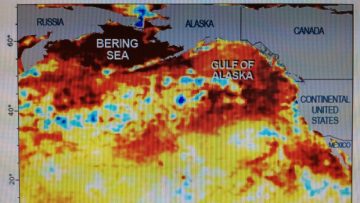 The giant ocean ‘blob’ isn’t dead — yet. The warm patch of water that stretches along the Pacific Coast is currently resting several hundred metres below the surface of the ocean, despite earlier reports that it had dissipated, according to new data. “What we’re finding is that the upper waters are being mixed by the wind again and coming back to normal temperatures, but the residual effect of the blob is still there at about 150 to 200 metres [below the surface],” said Ian Perry, a senior research scientist with Fisheries and Oceans Canada. The blob was widely pronounced dead earlier this year after satellite heat images no longer detected abnormally warm waters on the surface of the Pacific Coast. However, the imaging only read up to 40 metres below the surface, said Perry. Read the story here 11:31
The giant ocean ‘blob’ isn’t dead — yet. The warm patch of water that stretches along the Pacific Coast is currently resting several hundred metres below the surface of the ocean, despite earlier reports that it had dissipated, according to new data. “What we’re finding is that the upper waters are being mixed by the wind again and coming back to normal temperatures, but the residual effect of the blob is still there at about 150 to 200 metres [below the surface],” said Ian Perry, a senior research scientist with Fisheries and Oceans Canada. The blob was widely pronounced dead earlier this year after satellite heat images no longer detected abnormally warm waters on the surface of the Pacific Coast. However, the imaging only read up to 40 metres below the surface, said Perry. Read the story here 11:31

































